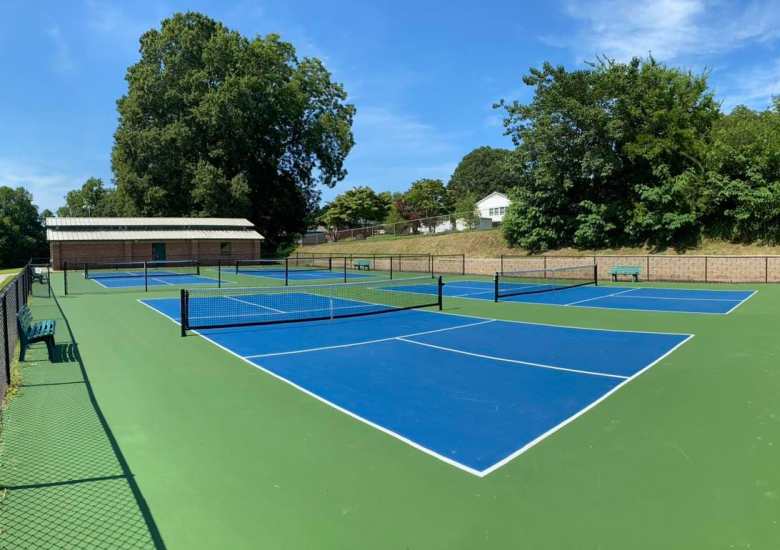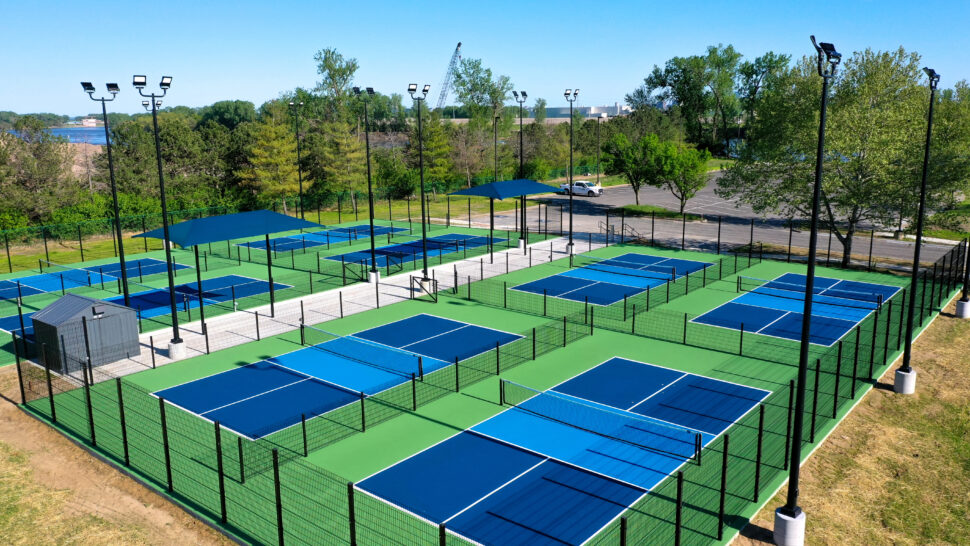The Ultimate Guide to Planning Your Pickleball Court Construction Project
Boost Citizen Interaction With Community-Driven Pickleball Court Projects
The appearance of community-driven pickleball court tasks presents a special opportunity to foster local interaction and reinforce neighborhood connections. The real inquiry stays: exactly how can these grassroots efforts be strategically applied to ensure sustainability and inclusivity in varied neighborhoods?
Importance of Neighborhood Involvement
Community engagement is a critical aspect in the successful development of pickleball court jobs, as it promotes a feeling of possession and collective responsibility amongst citizens. When area members are proactively associated with the preparation and implementation phases, they are most likely to promote for the project's long-term success. Engaging stakeholders such as regional players, families, and leisure teams makes sure that the facilities meet the diverse needs and preferences of the neighborhood.
Moreover, community involvement grows an encouraging environment where residents feel equipped to contribute their sources and concepts. Pickleball court construction. This collective approach can cause ingenious options that boost the style and functionality of the courts, making them extra appealing to a larger target market. In addition, involving residents in decision-making procedures can reinforce social connections, promoting inclusivity and unity within the neighborhood
The visibility of neighborhood assistance for a pickleball project can likewise play a crucial duty in protecting financing and approval from local authorities. By showing a common dedication to entertainment advancement, areas can successfully advocate for sources and plan changes that favor the facility of pickleball courts, eventually improving the neighborhood culture and entertainment landscape.
Steps to Initiate a Job
Launching a pickleball court task calls for a methodical method that constructs on the structure of community involvement developed in previous discussions. The very first step is to set up a task board comprising regional stakeholders, lovers, and reps from pertinent organizations. This diverse group ensures that several point of views are taken into consideration.
Next, conduct a needs assessment within the community. Surveys, focus groups, and public conferences can be effective in determining passion and gathering input on possible court places, wanted amenities, and organizing preferences. Following this, develop a job strategy describing duties, objectives, and timelines.
Once the strategy remains in place, involve with neighborhood authorities to comprehend zoning policies and any type of required licenses. Connecting transparently with the area throughout this procedure is critical, as it fosters depend on and urges further engagement.
In addition, organizing neighborhood occasions can assist preserve momentum and interest. These events can serve as platforms for more discussion and assistance to reinforce community connections. Record every step taken and keep in-depth records, as this will certainly be helpful for future stages of the job, including funding and source procurement.
Funding and Resources Available
Securing financing and resources for a pickleball court task is often an important step that can determine the job's usefulness and success. Different methods exist for obtaining financial support, ranging from public funding to private sponsorships. Local federal government gives, often aimed at site here advertising area wellness and recreation, can offer considerable economic support for such campaigns.
In addition to government resources, nonprofit companies and structures frequently offer gives particularly for sporting activities and community advancement jobs. Engaging regional organizations as sponsors can likewise be a worthwhile method; several firms are eager to purchase community efforts that enhance their corporate social responsibility profile.
Crowdfunding systems have arised as a feasible option for grassroots fundraising, making it possible for area members to contribute directly to the job. This technique not only increases funds but additionally fosters a feeling of possession amongst individuals.
Style and Planning Considerations
Effective style and planning are essential components of any effective pickleball court task adhering to the purchase of financing and resources. A comprehensive analysis of the proposed location is essential; this consists of examining ease of access, distance to existing area services, and the capacity for exposure and involvement.
The design of the court must abide by official size specifications while thinking about the surrounding environment. Incorporating attributes such as seating, shade structures, and appropriate illumination can dramatically improve player experience and viewer pleasure. Products chosen for the court surface area must prioritize longevity and safety and security, with options like acrylic or asphalt offering optimum efficiency.
Entailing community members in the layout procedure promotes a sense of possession and makes sure that the center meets neighborhood requirements - Pickleball court construction. This can be accomplished through public assessments and studies, allowing stakeholders to share their preferences and issues
Sustainability ought to likewise be a priority; including environment-friendly materials and practices can add to long-lasting feasibility. click to find out more Lastly, producing a maintenance strategy to make sure the court continues to be in superb problem will sustain recurring community interaction and participation in pickleball activities.

Success Stories and Case Research Studies
Highlighting the transformative effect of community-driven campaigns, a number of success stories illustrate exactly how collaborative initiatives have go to this site actually led to the development of dynamic pickleball courts across numerous regions. One noteworthy instance is the effort in a small town in Florida, where residents grouped with each other to convert an underutilized tennis court into a committed pickleball facility. With fundraising occasions and partnerships with regional companies, the neighborhood increased enough funds to set up brand-new nets, resurfacing, and lines, ultimately promoting a vibrant center for neighborhood gamers.
Similarly, in a suv location of California, a grassroots motion emerged to produce pickleball courts in a regional park. The job not just involved volunteers for building but also consisted of workshops to engage community participants in the sporting activity. As a result, the courts became a prime focus for social communication and health and fitness, bring in gamers of every ages.
These study exemplify exactly how community-driven tasks can boost local engagement, promote physical activity, and strengthen social bonds. By leveraging collective sources and excitement, neighborhoods can efficiently produce and maintain pickleball facilities that offer varied populaces and promote a sense of belonging.

Verdict
By prioritizing stakeholder participation throughout the preparation and application stages, these efforts can properly deal with diverse area requirements. Inevitably, such initiatives add to the improvement of public areas into dynamic facilities of fitness and social communication, strengthening community ties.
The emergence of community-driven pickleball court projects provides an one-of-a-kind chance to foster neighborhood interaction and enhance neighborhood connections.Neighborhood involvement is an important component in the successful growth of pickleball court projects, as it cultivates a feeling of possession and collective obligation among locals. When neighborhood members are proactively included in the planning and application phases, they are extra likely to support for the project's long-term success.Launching a pickleball court job calls for an organized method that constructs on the foundation of community interaction established in previous discussions. The project not just involved volunteers for construction yet likewise included workshops to involve neighborhood participants in the sporting activity.